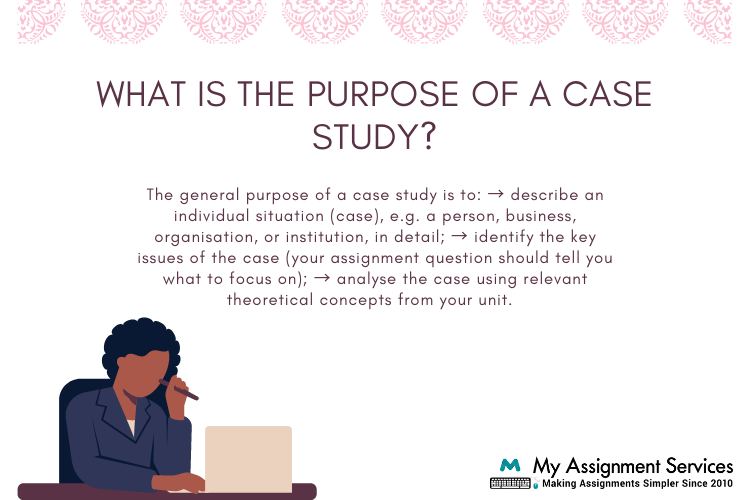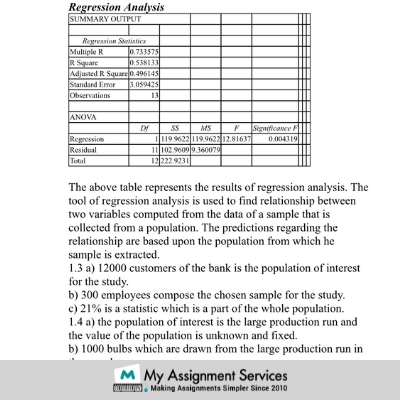
One of the most effective tactics for presenting your product and recruiting future consumers is to create a fascinating case study. But saying it is easier than doing it. This blog will look at a case study and some of the best examples to get you started.
A case study is an in-depth analysis of a particular situation or event. It can be used to explore a problem, test a theory, or examine a policy's impact. Case studies are often used in research, particularly in social science and medical research. They can also be used as a teaching tool, particularly in business and law education.
A case study demonstrates how your product has aided other businesses by presenting real-life results. Not only that, but case studies frequently include comments from customers, so it's more than just a sales pitch praising your own product. Instead, other businesses are complimenting you, and there is no more powerful marketing content than a spoken suggestion or testimonial. A great case study is also replete with information and stats to back up comments made about a project's achievements.

A case study is the most desired research design when you are required to collect a block of concrete, and comprehensive contextual information of a particular real-world subject. It also enables you to research the case's particulars, meanings, and ramifications.
Case studies are typically a better option in a thesis or dissertation. When you may not have the time to complete and resources to conduct extensive research, you can still keep your project focused and accessible. You may have to undertake the case studies to analyse and highlight different parts of your research challenge, or you could use just one Knowledgeable case study to analyse a particular subject in depth.
There are 8 sections in the case study:
1) Introducing the Case:This section introduces the reader to the situation or event that is being studied. It provides background information and describes the problem that is being investigated.
2) Identifying the Problem:the problem explains its nature and how it was identified.
3) Developing a Theory:the theory presents a theory or hypothesis about the problem and how it might be solved.
4)Testing the Theory:This paragraph describes how the theory was tested and what was found.
5)Gathering Information:This gathering information describes the methods that were used to gather information about the case.
6)Analysing the Information:The analysis of the information is gathered and discussion of its implications.
7) Drawing Conclusions:This section presents the conclusions drawn from the data analysis.
8) Reporting the Findings:Here, these lines provide a description of what was learned from the case study. It includes an explanation of how the findings might be applied in other situations. A good case study can provide evidence for more than one theory. For example, if a business is being studied, at least three different themes are likely to emerge during the process of research and analysis
If you have been looking for some case study help in the UK, here is an example of a case study discussion for better perspective:
"The use of case studies in teaching business communication has been heralded as both an effective and efficient approach by many authors (Driscoll, Davison et al. 1990; McCroskey & Young, 1986; Swearingen & Zlateva, 2000). Provides opportunities for learners to apply concepts and theory related to communication processes and relationships among communication factors (Dyer & Hardyman, 1991). Sincere communication efforts by management can greatly influence the quality of work-life for employees. In small firms, open communication between managers and employees enhances organisational morale because it improves the allocation process by making workers more aware of problems they face on a daily basis. Employees also share their credit by telling their supervisors about their successes.
A case study of a small business that is experiencing communication problems can provide students with insight into the various communication factors that contribute to the problem and how they might be addressed. In addition, learners can explore the effects of communication on organisational morale and performance."
The use of case studies in business education has been found to be an effective tool for teaching students about the various communication factors that impact organisational performance. An example of a case study that examines the effects of communication on organisational morale is as follows:
"In a case study exploring the impact of communication on organisational morale, researchers found that when employees feel that their supervisor is interested in them as individuals and takes an interest in their work, overall job satisfaction is increased. Employees were also more satisfied when they felt free to express their opinions on projects and when they had opportunities to participate in project development and implementation.
A 20-year old business owner of a construction firm with 15 employees was concerned about the lack of enthusiasm she observed among her workers while visiting job sites. After talking with several of her employees, it became apparent that some workers felt their input on projects was not valued or that their ideas were ignored. The employees expressed concern about having little voice in decisions that might affect them personally (Shen & Cheatham, 2010).
The company's owner decided to implement monthly meetings where all employees could discuss issues related to the business and offer suggestions for improvement (Shen & Cheatham, 2010). In addition, all employees were encouraged to attend monthly training sessions on job-site safety issues. A few months after the meeting and training sessions were implemented, the number of grievances filed by employees dropped dramatically (Shen & Cheatham, 2010)."
The findings from this case study could inform future research about how the relationship between management and employees can influence organisational morale in small businesses. The impact of communication on employee participation, satisfaction, and productivity could also be examined more deeply.
"The use of case studies in teaching business communication has been heralded as both an effective and efficient approach by many authors (Driscoll, Davison et al. 1990; McCroskey & Young, 1986; Swearingen & Zlateva, 2000). Provides opportunities for learners to apply concepts and theory related to communication processes and relationships among communication factors (Dyer & Hardyman, 1991). Sincere communication efforts by management can greatly influence the quality of work-life for employees. In small firms, open communication between managers and employees enhances organisational morale because it improves the allocation process by making workers more aware of problems they face on a daily basis. By telling their supervisors about their successes, employees also share in the credit."
The use of case studies provides opportunities for students to apply concepts and theories related to communication processes and relationships among communication factors. In addition, sincere communication efforts by management can greatly influence the quality of work-life for employees in a small business. When workers feel that their input is valued and they are able to participate in decisions that affect them, organisational morale is improved. This, in turn, can lead to increased productivity and job satisfaction.
Here is one More Case Study Answer Example


The case study is a very useful research tool in the social sciences, particularly in disciplines such as education and psychology. It can be used to explore a problem, test a theory, or examine the impact of a policy. Case studies are often used in business and law education too.
My Assignment Services is here to assist you with your complex case studies! If you are looking out for case study help in the UK, you can get access to our subject matter experts' assistance. Here’s what we guarantee our students with:
Don't wait anymore. Put your queries in the form and we will make sure they reach the right expert in the quickest time!
Check out these related insights:

Charles writes blogs and articles for students who are facing problems with their management assignments. His articles have been featured on several websites. He has contributed to the academic enhancement of students from the University of Oxford, University of Cambridge, University College London, etc. He joined the team of Online Assignment Expert as a consulting expert and now is a full-time academic help provider. His expertise in the field of management covers topics like leadership management, human resource management, business management and several others. His blogs focus on solving the most complex of the queries and simplifying the processes.
1,212,718Orders
4.9/5Rating
5,063Experts
Turnitin Report
$10.00Proofreading and Editing
$9.00Per PageConsultation with Expert
$35.00Per HourLive Session 1-on-1
$40.00Per 30 min.Quality Check
$25.00Total
FreeGet
500 Words Free
on your assignment today
Trending now
The Student Corner
Subscribe to get updates, offers and assignment tips right in your inbox.
Popular Posts
Popular Posts
Request Callback
Doing your Assignment with our resources is simple, take Expert assistance to ensure HD Grades. Here you Go....
Speak directly with a qualified subject expert.
Get clarity on your assignment, structure, and next steps.
In this free session, you can:
Loved reading this Blog? Share your valuable thoughts in the comment section.
Add comment